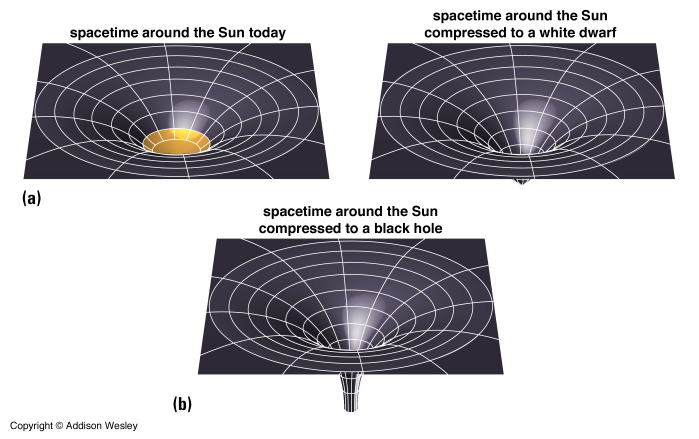Isaac Newton's Law of Universal Gravitation only showed how two masses interacted with each other. It is given by this equation:
The force of gravity between two masses, M and m, is the product of a constant, G, and their masses divided by their separation squared. For a couple of centuries, this worked. But when careful examinations of Mercury were made, this equation did not really fit the observations. That's when Einstein made his revelation.
MASS CURVES SPACETIME
What does this mean? For thousands of years, everyone thought of space as having three dimensions: length, width, and depth; and those three dimensions were flat. But Einstein showed mathematically that there are actually four dimensions, the fourth being time. But the more important thing is that mass can affect the flatness of space.
Imagine a sheet of rubber. You stretch it out flat. Now, on that sheet, place a marble. Where the marble lies, there is a small depression. Take the marble away, and replace it with a bowling ball. The depression is much bigger. This is like spacetime. The higher the mass, the deeper the depression in spacetime.

From Astronomy Today
As shown, the higher the concentration of mass, the larger the curvature. Around the Earth, the depression is small compared to the Sun's depression. Around a larger star, like Rigel, the depression is enormous.
This curvature helps explain why the equinoxes precess, why orbitals are elliptical, and why objects move faster the closer they are to the body they orbit. This theory was proven when observing Mercury's orbit and why it's perihelion precessed. It also was proven by Sir Arthur Eddington when he observed a star behind the Sun during a solar eclipse, which will be explained next.
No comments:
Post a Comment